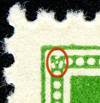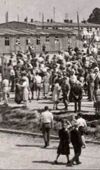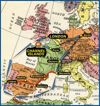The Channel Islands at War
The Channel Islands lie west of the Cotentin Peninsula of France (also known as the Cherbourg Peninsula) at the entrance to the Gulf of Saint-Malo and 80 miles (130 km) south of England. They were the only British territory to be occupied by Germany during the Second World War.
Although the islands were scarcely touched by combat, and their residents endured far less adversity than any other part of occupied Europe, the war impacted every aspect of island life. The following web pages, drawing especially on stamps, covers, and Red Cross message forms, document various aspects of the occupation.

The Channel Islands at War — Postage stamps as instruments of resistance: Postal artifacts of the prewar and wartime periods documents the German occupation of the Channel Islands and highlight the successful efforts of stamp designers to ridicule Hitler and Mussolini and to surreptitiously display their allegiance with Great Britain.

The Channel Islands at War — Col. Rybot’s poetic protest: In 1944, the designer of Jersey’s first occupation stamps wrote a poem, “An Occupation Alphabet,” to protest the German presence in the Channel Islands as well as the unpatriotic behaviour of some of his fellow islanders.

The Channel Islands at War — Deportations and imprisonment: When Great Britain interned German citizens living in Iran to prevent a possible takeover of oil fields and export facilities by Germany, Hitler retaliated by ordering the deportation of thousands of British citizens living in the Channel Islands to internment and concentration camps in France, Germany, and Poland, where many died.

The Channel Islands at War — The Red Cross Message Scheme: Local and inter-island mail services continued throughout the German occupation of the Channel Islands, but international mail services were prohibited. The Message Scheme of the International Committee of the Red Cross was a godsend.